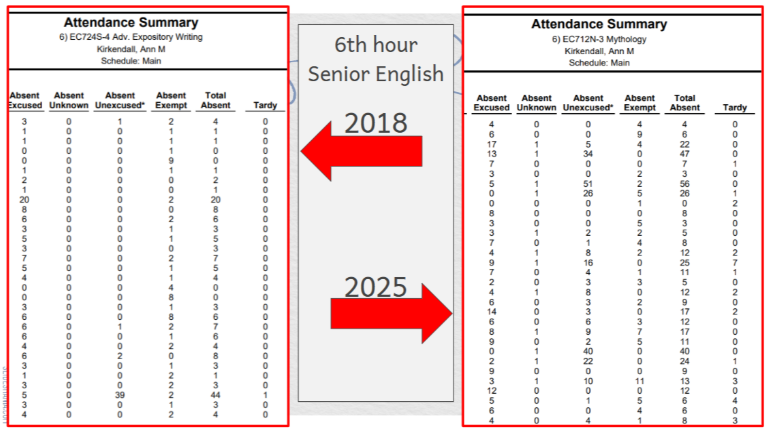Finding freedom in her hijab
Soph. Hanan Mohsen in one of her many colorful hijabs.
May 17, 2021
“It’s always, ‘You’re forced to wear it. You should just take it off. I’m helping you,’ and you’re not helping me. Just don’t touch it.” Soph. Hanan Mohsen lives under scrutiny from ignorant people she encounters.
Hanan, 15-years-old, endures unwarranted hateful remarks and judgmental glances for one reason. She is a Muslim who wears a hijab.
“In the context of Muslim dress, it is the way which men and women cover their bodies by means of clothes and garments to conceal ones private and provoking body parts. It is the principle of modesty for both men and women when interacting with the outside world,” Tareq Saleh, Outreach Coordinator at the Islamic Mosque & Religious Institute, said.
Islam – the second-largest religion in the world – is distorted by some from a religion to an extremist group.
The hijab, a clear representation of modesty, is regularly viewed in a negative light.
Muslims originally came to America during the 14th Century. Despite seven centuries of national development, discrimination and prejudice against Muslims is still a prominent issue. As recently as January 20, President Biden formally ended former-president Trump’s Executive Order 13769, more commonly known as “the Muslim ban.”
In a world bustling with intolerance and Islamophobia, growing up while boldly displaying her religion has brought forth many adversities.
The central disparity between Hanan’s hijab and another article of clothing is its purpose. Around the high school campus, Hanan is often spotted in stylish outfits paired with a coordinating hijab. “I decide which hijab I’m going to wear based on what I’m going to wear to school,” she said, explaining the simplicity behind her choices.
“The hijab protects the identity of the Muslim women. It takes sexuality out of the picture and focuses on her intellect, her values, and other attributes that make significant contributions to society. It presents women as more of an integral part of society, and not just a material part,” Saleh said.
Ignorance about something so pure should not serve as the root of confusion nor animosity.
Instructor Jennifer Brenner, who organizes West Ottawa’s lessons of acceptance and inclusion, said, “At West Ottawa, we strive to celebrate the diversity of our students. We want individuals to feel comfortable expressing and sharing their culture. We strive to encourage our students to be an ally for others and always treat others with respect and dignity.”
Despite school-wide efforts, some students still struggle to embrace the differences of their peers. There have been instances where Hanan’s hijab has been ripped from her head.
“People have pulled it off multiple times, in school and out of school. When I was in seventh grade, I was just chilling in class, minding my business, and the bell rings. We were all standing in front of the door and somebody came from behind me and pulled it off,” Hanan said. “I was in shock. I put it back on and walked away and then I went to the office. It was bad.”
Even at a young age, Hanan was exposed to ignorance and religious intolerance, yet the selfish unfamiliarity of Muslim customs doesn’t end there.
“In middle school too, of course, I would sit on the bus and people would come in and make racist or Islamophobic remarks about bombs, about terrorism, or about Osama Bin Laden being my uncle,” she said.
No one wants to be the target of such abhorrent remarks, and no one should be a victim of such vile comments, yet Hanan deals with similar abuse.
Since middle school, Hanan has gained greater maturity and confidence, allowing her to speak up in times of discomfort. Even so, she continues to deal with unjust mistreatment from people who refuse to understand or accept her beliefs.
“Some people think that because of the religion – because we decided to cover ourselves – we’re oppressed or we don’t have any rights. It’s actually the total opposite. We choose to dress this way and cover ourselves to preserve ourselves. It’s our choice, people telling us to take it off is oppressing us. We don’t want to take it off,” Hanan said.
It’s become far too common for people to remain uneducated about different beliefs and ways of life; this is true in Hanan’s case. “Some people, I don’t know how, they just don’t know anything. History classes in some schools just don’t teach about it [Islam] or it’s shown in a negative way. I would like for them to know that it’s [the hijab] more than just a fabric on my head. It symbolizes many things like modesty and my devotion to my religion,” she said.
When facing negativity, Hanan finds positivity. When others reach out to her in hopes of understanding her beliefs, Hanan is ecstatic. “It’s nice for people to know more about your religion,” she said.
Hanan’s hijab is representative of many things: not only modesty, but also freedom and power.
“Where, when, and how I wear my hijab is my choice. There are many positives and negatives of wearing the hijab – not about the hijab itself – but in the way people view the hijab,” Hanan said. “The hijab is seen as oppressive when in reality it is liberating. When I wear the hijab, I feel liberated and I am able to express my freedoms. The hijab empowers me to be who I am today and pushes me to be better and greater.”




